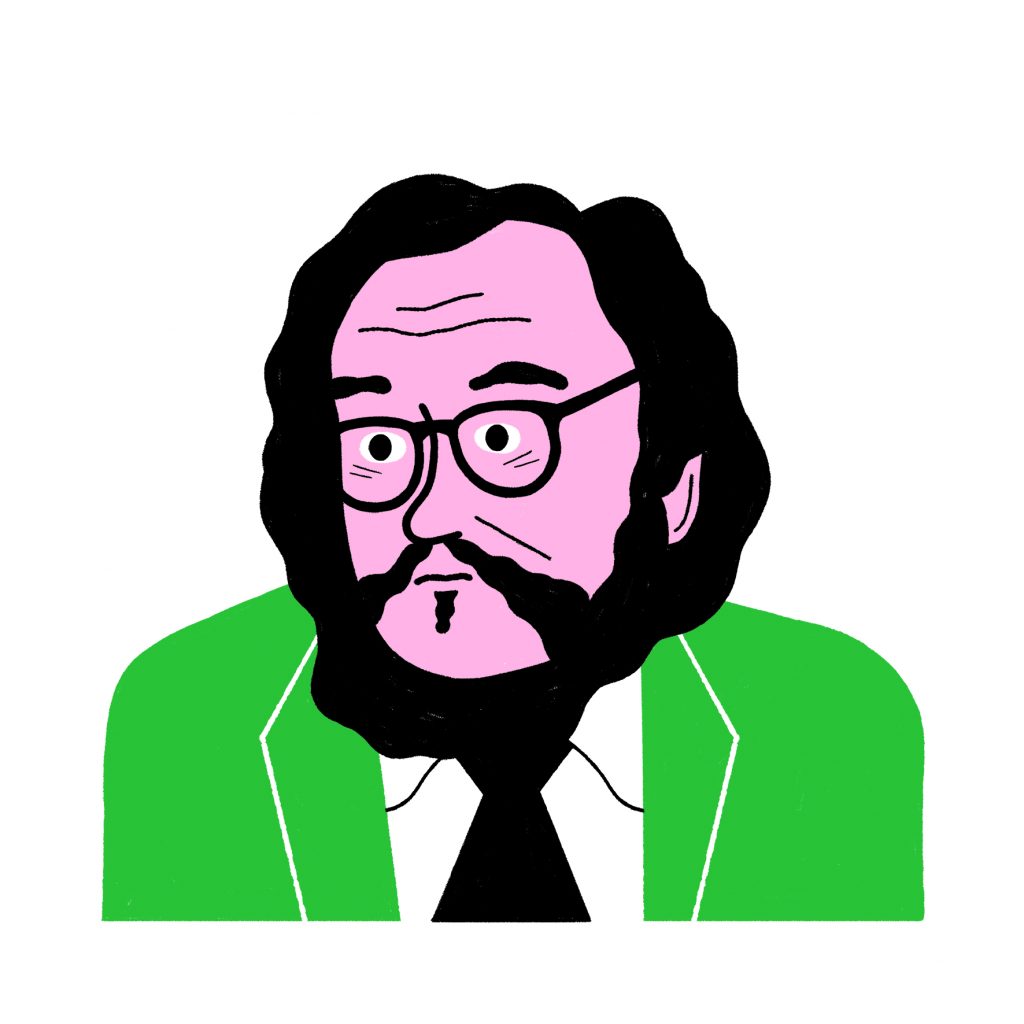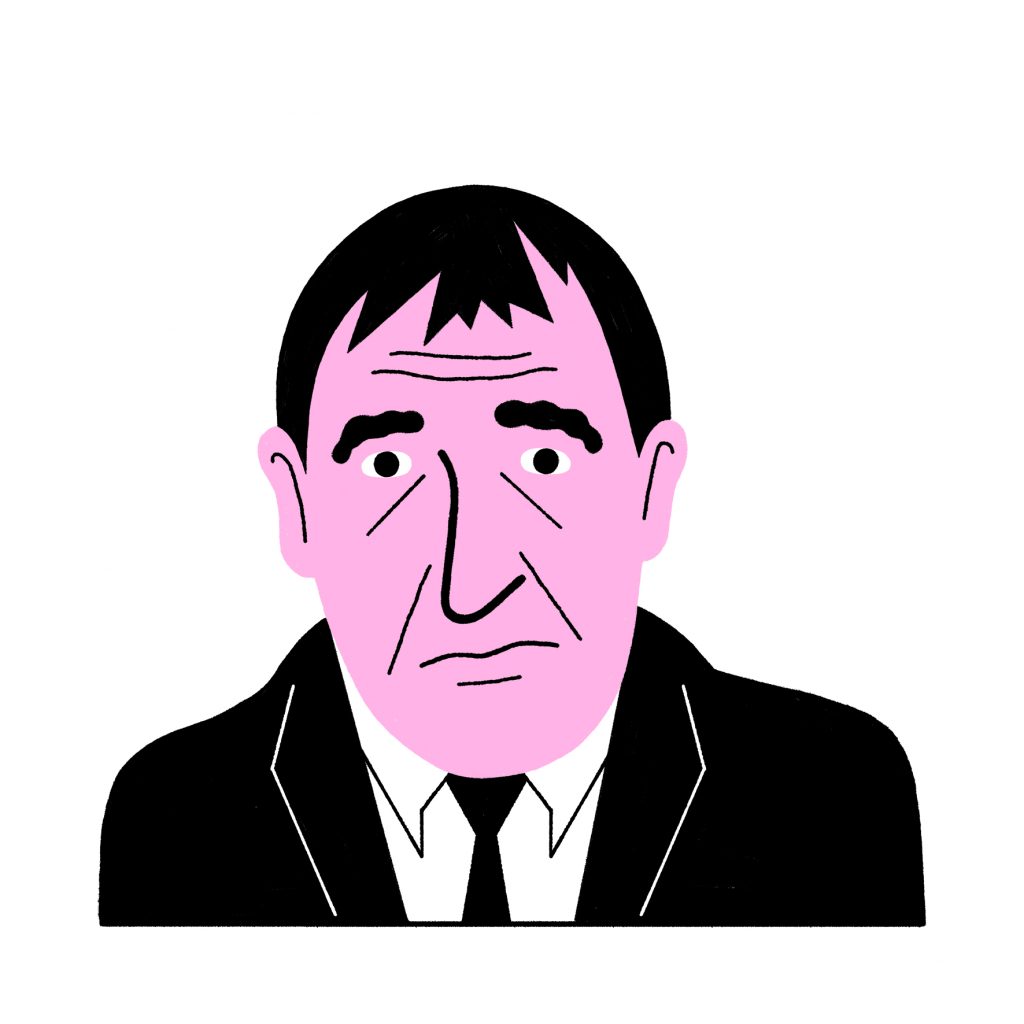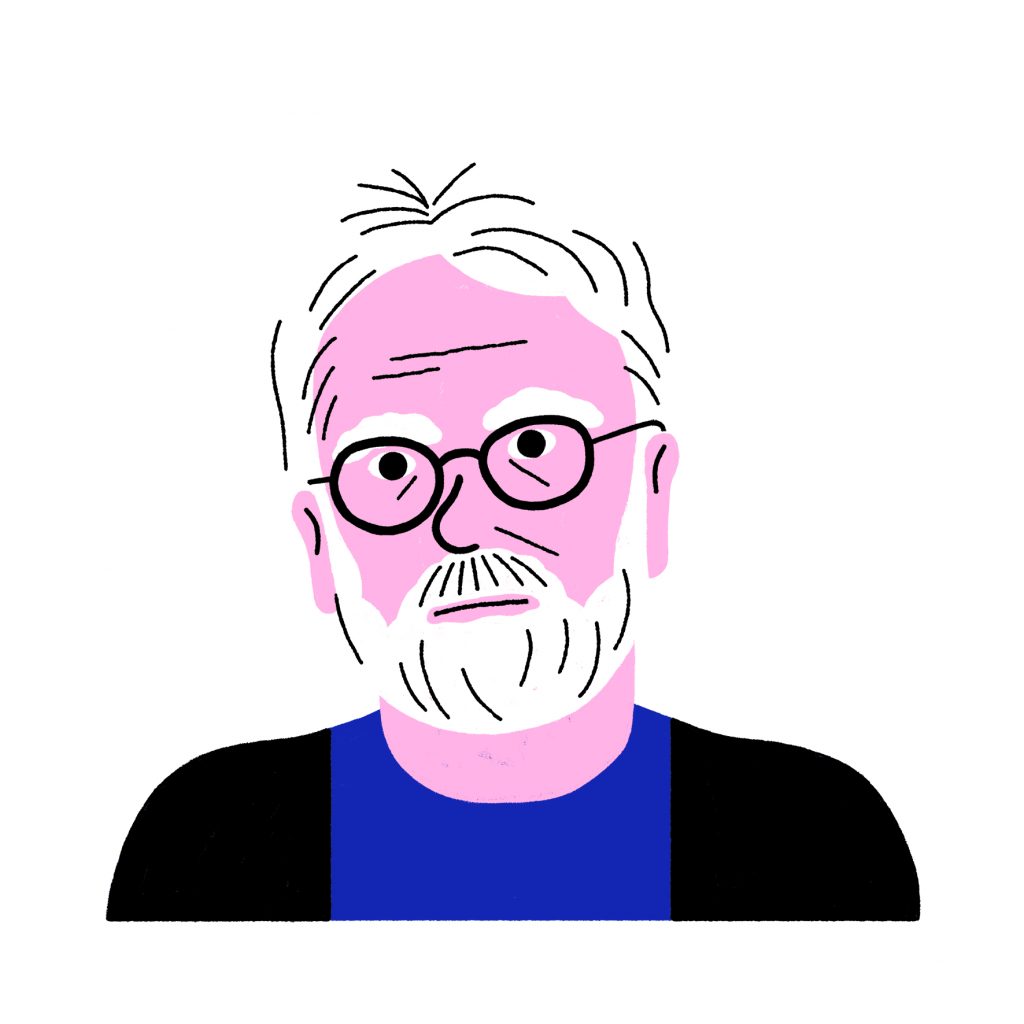
JERZY GROTOWSKI 1933 – 1999
APOCALYPSIS CUM FIGURIS 1969
60 minutes
„First of all (…) we avoid thinking of the theatre as constructed of various disciplines. We are looking for what distinguishes the theatre from all other types of performances and shows.“
The performance was the outcome of thorough examinations, experiments, and improvisations, which Jerzy Grotowski carried out with his Wrocław-based theatre company Laboratorium Teatru. The actors were expected to perform “a total act,” in which they enter a state of higher consciousness and become the portrayed characters employing their own intimate emotions provoked oftentimes by traumatic experiences. This act of expressive transgression of the actor’s limits made a shocking impression on the audience. The blasphemous combination of corporeal existence and references to liturgy gave rise to objections of the Primate Stefan Wyszyński, who advised the congregation against watching the performance.
Grotowski spent his childhood years in a village of Nienadówka, near the city of Rzeszów. There he was exposed to a local blend of Christian traditions and folk rituals, which later became a source of his lifelong fascination. His mother used to provide him with a steady supply of books about distant lands and foreign cultures. Having earned a degree in directing, Grotowski became the director of a small provincial theatre in Opole. Before long he was experimenting with shortening the distance between the audience and the actors, which along with his fascination with the ritual aspect of theatre performance finally led to the development of the concept of “the poor theatre.” Grotowski’s idea was to remove all extraneous elements in order to focus attention exclusively on the intense relation between a properly prepared actor and a spectator.
As a result of growing recognition, Grotowski moved to Wrocław, where the concept of “the poor theatre” could finally be put into practice. His performances, The Constant Prince and Apocalypsis cum figuris, exerted a profound impact on the history of theatre and turned Grotowski into a great authority figure, the leading “prophet” of the avant-garde. Apocalypsis was so radical in its expression that the director abandoned the theatre scene in favour of other interdisciplinary projects. Grotowski brought together performative, ceremonial, and para-theatrical activities, which he realized in various forms first in Poland, then in the US and Italy.
Illustrated by MAŁGORZATA NOWAK (STUDIO ACAPULCO)

TADEUSZ KANTOR 1915 – 1990
THE DEAD CLASS 1975
80 minutes
„The theatre (..) is the space the dead cross over coming from the other side, from the other world to enter our world, the present, our life.“
One day, while visiting the seaside, Tadeusz Kantor came across an abandoned building with empty school desks inside. The scene became the inspiration behind the concept of the Theatre of Death, whose first staged performance was the Dead Class itself. The artist believed that memories are the only reality that humans can experience. There is nothing more real than recollections. Kantor aimed at reviving the world of his childhood permanently destroyed by world wars and the Holocaust and at the same time showing the futility of his attempts.
The Theatre of Death, which included five performances, marks the final stage of Tadeusz Kantor’s career and sums up his personal experiences and artistic endeavors. Born during World War I in a small Polish Jewish town of Wielopole Skrzyńskie, which served as a recurring motif in his works, Kantor received his formal education as a painter. As an innovative artist and versatile creator, he kept up to date with the latest artistic trends, which he used to develop his unique style. He was renowned for bringing together art and theatre with help from his experimental theatre group Cricot 2. After years of experimenting with various conventions, Kantor developed one-of-its-kind artistic expression referred to as the theatre on canvas.
Although it came quite late in Kantor’s career, the success of the Dead Class was unprecedented. The unheard-of formula of the performance together with the shocking message of the Theatre of Death made a lasting impression on the viewers of the Edinburgh festival of 1976. It gave a boost for an international career of “the best theatre performance in the world” as called by the American edition of Newsweek. In the next seventeen years the performance was staged over six hundred times in numerous countries on five continents. Kantor’s following performances were staged and financed abroad and then performed in Poland.
Illustrated by MAŁGORZATA NOWAK (STUDIO ACAPULCO)

KRYSTIAN LUPA 1943
KALKWERK 1992
approx. 180 minutes
„In fact, we always deceive others pretending we know more than we actually do (…) we tend to hide the unbelievable deficits that we all carry inside.“
Kalkwerk, based on a novel of controversial Austrian writer Thomas Bernhard, as directed by Lupa is a hypnotizing tale of big dreams and grand intellectual ambitions that reality fails to fulfil. The evocative performance was soon hailed as a masterpiece while the then 50-year-old director was recognized as the most important figure on the Polish theatre scene. Lupa has been seen on the one hand as a continuator of the grand masters and on the other as an innovator questioning the established hierarchies.
Born in Jastrzębie-Zdrój, Krystian Lupa initially pursued a career as a physicist. However, having completed a few years in college, he dropped out. In 1969 he earned a diploma in graphic design from the Academy of Fine Arts. He was later accepted to a film school, where he was expelled from for “eccentric and provocative behaviour.” Following his fascination with Kantor and Konrad Swinarski, Lupa decided to study for a degree in theatre directing. It took him two decades to develop his own hypnotizing, trance-like, contemplative style focused on profound explorations of the meanders of the characters’ consciousness.
Kalkwerk came as a complete revelation to the international critics, of which the enthusiastic review in the New York Times is a clear example. Today Lupa’s performances are staged in Europe, the USA, Russia, and recently China. Lupa is also appreciated as a renowned educator and mentor of a new generation of artists including Krzysztof Warlikowski and Grzegorz Jarzyna. Being aware of his own status as an authority figure, Lupa has been in constant dispute with it. His recently directed performances undergo internal disintegration, are purposefully left unfinished, and keep questioning the role of art and artists in the contemporary world.
Illustrated by MAŁGORZATA NOWAK (STUDIO ACAPULCO)

KRZYSZTOF WARLIKOWSKI 1962
KRUM 2005
approx. 180 minutes
„What identifies every human being is the minority, not the majority, they come from. And every person comes from some minority.“
Krum is an adaptation of Hanoch Levin’s drama. It is a tale of a middle-aged man who returns to his hometown overwhelmed with the feeling of failure. From Levin’s drama, Krzysztof Warlikowski extracted a story about a broken and apathetic community whose members dream about a better life but keep hurting each other. It takes random tragedies to bring a faint hope to restore the community. Krum was a breakthrough performance for Warlikowski, who had been recognized as a young provocateur before. The director was finally widely acclaimed for his talent in directing a subtly nuanced performance, where a biting satire and camp aesthetics meet an intimate and shocking psychodrama.
Born in Szczecin, Warlikowski has always intended to leave the cocoon of Polish culture. He started studying philosophy, specifically the ancient philosophers, to expand his knowledge and adopt broader perspectives. He spent several years in Paris where he explored literature, theatre, and opera. He returned to Poland to enroll in directing studies. This is when he met Krystian Lupa, who encouraged him to experiment.
The director has been considered one of the most renowned figures on the Polish theatre scene for the last thirty years. Together with other Lupa disciples, Warlikowski has transformed Polish theatre opening its doors to new themes and stylistics. Initially, he was known for shocking the audience with brutality, nudity, unchained and non-heteronormative sexuality, and obscene language. In his performances, there is a recurring theme of maladjusted outsiders, who settle accounts with a rejecting community and face their own choices. Such themes are often portrayed against the background of universal human dilemmas as well as ancient or Shakespearian motives. Today Warlikowski is listed among the leading directors of European theatre. His opera performances staged since 2000 have brought him wide international acclaim.
Illustrated by MAŁGORZATA NOWAK (STUDIO ACAPULCO)
